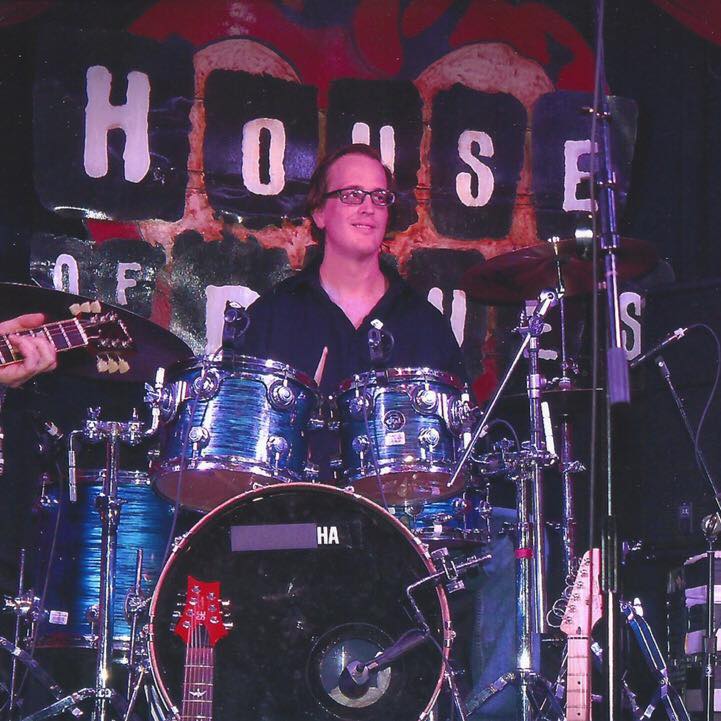The Evolution of Drumming Styles: Two Centuries of Rhythmic Innovation
From the early beats of military marches to the rich, diverse rhythms that soundtrack our lives today, we'll trace the evolution of drumming styles and the drummers who made history. Buckle up and let's get into the last two decades of drumming.
Drumfluence is reader-supported. When you make a purchase through links on our site, we may earn an affiliate commission at no extra cost to you. Learn more.
Origins and Early Development (Pre-1865)
In order for us to get into the evolution of drumming styles, I feel it’s important to revisit the it’s roots. Ancient civilizations worldwide used drums for communication, ceremonies, and warfare. In Western classical music, timpani and military drums dominated orchestral percussion until the mid-19th century. African drumming traditions, particularly West African talking drums and polyrhythmic patterns, would later profoundly influence American musical development.
The Post-Civil War Era (1865-1900)
A New Beginning in American Music
The end of the American Civil War in 1865 marked a transformative period in American musical history. Newly emancipated African-Americans brought rich rhythmic traditions into the mainstream, particularly in New Orleans, where the fusion of African polyrhythms with European musical elements would later birth jazz.
Military Influence and Technical Innovation
Military bands had a major impact on early drumming techniques. They standardized rudiments, which are basic stick patterns. They also developed precise timing and discipline. Additionally, they introduced formal drum notation and established the traditional grip for marching.The Evolution of the Modern Drum Set (1890-1920)
Multi-Instrumental Innovation
The creation of the modern drum set was influenced by economic and practical needs. Theater owners wanted smaller orchestras. Drummers had to manage multiple percussion parts at once. Also, new hardware and pedal mechanisms led to innovative playing techniques.
Technical Developments

Key innovations transformed drumming capability:
1909: Ludwig’s First Bass Drum Pedal
Ludwig revolutionized drumming with the first commercially successful bass drum pedal. This allowed drummers to play the bass drum with one foot, freeing their hands for other percussion instruments. It marked a turning point in drum kit design, making multi-instrument drumming more efficient.
1910s: Adjustable Cymbal Stands
The introduction of adjustable cymbal stands gave drummers more control over cymbal positioning. This innovation improved ergonomics and allowed for greater creativity, enabling drummers to incorporate cymbals more dynamically into their playing.
1919: Modern Hi-Hat Stand
The modern hi-hat stand evolved from earlier “low boy” models. This new design allowed drummers to use a foot pedal to open and close cymbals at a higher level, adding more expressive possibilities to their rhythms. It became a core component of the modern drum kit.
1929: Zildjian Cymbals Enter the Market
Avedis Zildjian III, a Turkish immigrant, established the Zildjian Cymbal Company in Quincy, Massachusetts. Building on a cymbal-making tradition dating back to 1618, Zildjian introduced cymbal types still used today, including the crash, ride, splash, sizzle, and hi-hats. These innovations expanded the tonal range of drumming, giving drummers new tools for expression.
Early 1920s: Standardized Drum Sizes and Hardware
During this period, manufacturers began standardizing drum sizes and hardware. This consistency improved the sound quality and compatibility of drum kits. It also made it easier for drummers to mix and match equipment from different manufacturers
The Evolution of Jazz Drumming: From Dixieland to Bebop and Beyond
Jazz drumming has seen transformative changes over the decades, marked by the contributions of key innovators who shaped the direction of the genre. This journey through jazz drumming not only highlights specific eras but also showcases the profound impact of cultural influences and technical advancements.
Early Jazz and Dixieland (1910s-1920s)
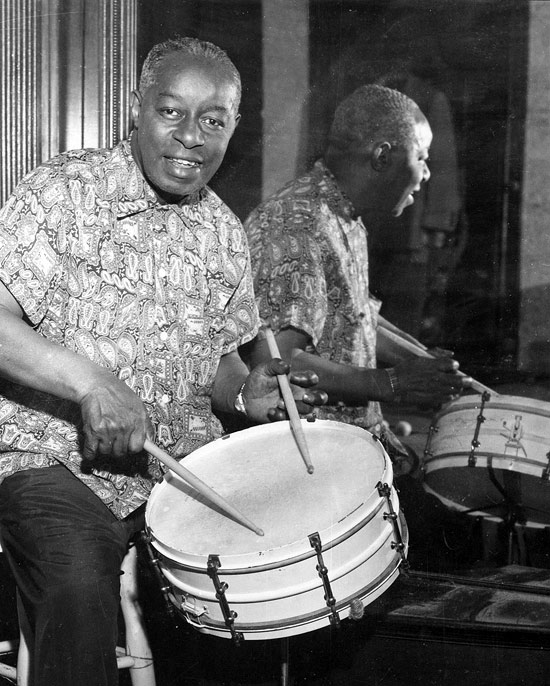
In the early days of jazz, particularly in New Orleans, the music was a rich blend of European and African cultures, featuring traditional marching melodies, blues-influenced harmonies, and Eastern rhythms. Drummers like Baby Dodds were central to this era.
They primarily supported the ensemble by maintaining rhythm, using setups that often included woodblocks, small cymbals, and snare drums. Dodds was a key innovator, being one of the first to use early drum kits in jazz, helping to define the evolving sound of the genre.
The Swing Era and Big Band (1930s-1940s)
Bebop Revolution (1940s-1950s)
Drumming in the bebop era featured faster tempos and complex rhythms. Max Roach and Kenny Clarke revolutionized drumming with interactive and melodic styles. Dizzy Gillespie and Chano Pozo infused jazz with Afro-Cuban rhythms, inspiring drummers to embrace Latin percussion techniques.“
Afro-Cuban and Global Influences (1950s-1960s)
The collaboration between jazz and Afro-Cuban musicians created innovative polyrhythmic arrangements that blended swing with Latin elements. Drummers like Art Blakey expanded jazz drumming by incorporating African and Middle Eastern rhythms. Additionally, new percussion instruments like congas and timbales were introduced into jazz ensembles. (I’ll dive more into Afro Cuban drumming in a bit)
Post-Bop Evolution (1960s-1970s)
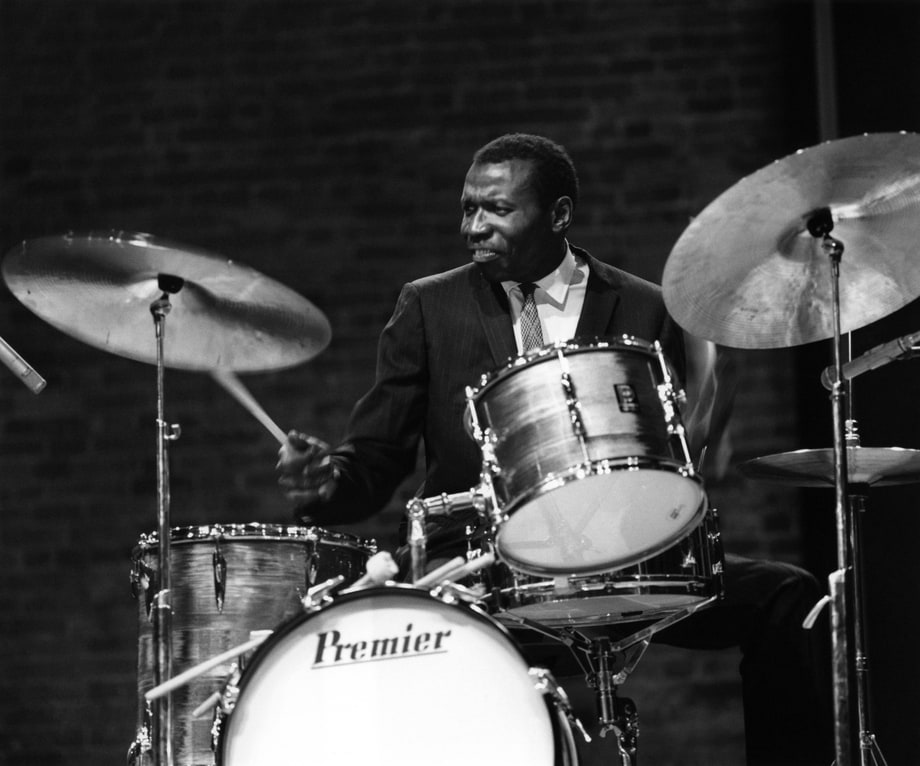
Following the bebop era, the post-bop period introduced even more complexity and innovation to drumming, characterized by its exploratory styles that blended hard bop with modal jazz and avant-garde elements. This era was defined by legendary drummers like Tony Williams, whose dynamic playing with the Miles Davis Quintet became a hallmark of modern jazz drumming. Williams, only 17 when he joined Davis, brought a new level of technical prowess and explosive creativity that propelled the rhythm section into more experimental and boundary-pushing directions.
Elvin Jones, another monumental figure, significantly impacted this period through his work with John Coltrane. Jones’ polyrhythmic style helped to define the sound of classic albums like A Love Supreme. His ability to layer rhythms, combined with a powerful swing, added a profound depth and intensity to the music that remains influential.
Drummers like Jack DeJohnette also emerged during this era, known for their versatility and the ability to blend different genres into a cohesive sound. DeJohnette, notable for his work with both the Keith Jarrett Trio and his own eclectic projects, exemplifies the innovative spirit of post-bop, where the fusion of rock, world music, and jazz elements took drumming to new heights.
The post-bop era set the stage for future explorations in jazz, with drummers pushing the boundaries of what could be accomplished behind the drum kit, influencing countless artists and continuing to shape modern musical landscapes.
The Soul Revolution and Session Legends (1960-1975)
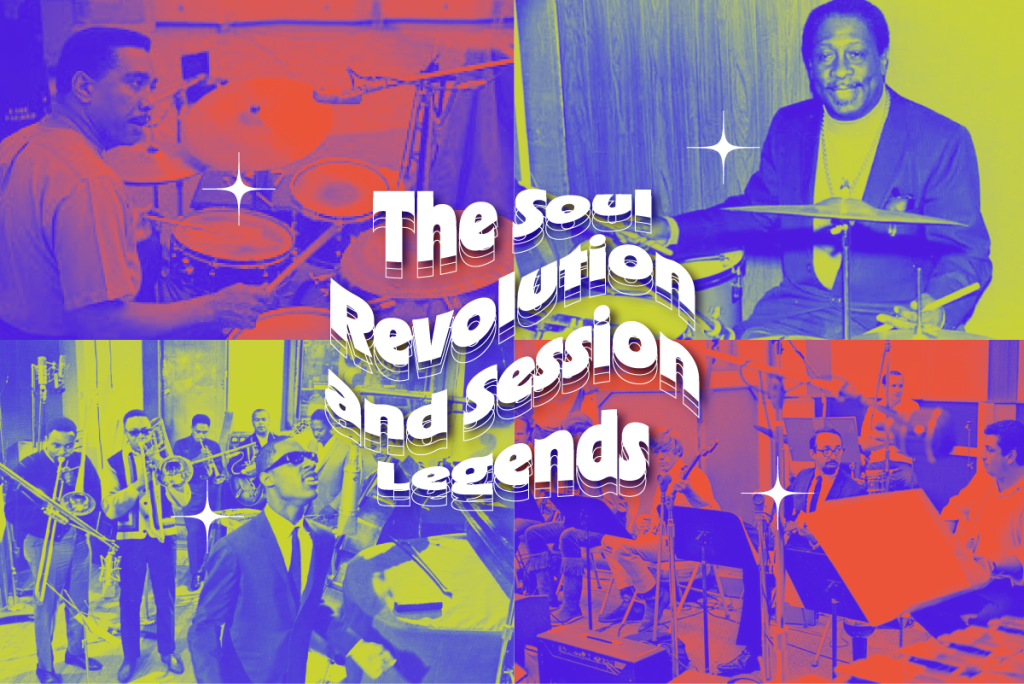
The Birth of the Backbeat: The Wrecking Crew
As rock evolved, the legendary Wrecking Crew revolutionized studio drumming. Hal Blaine, one of the most recorded drummers in history, transformed popular music by creating the iconic “Be My Baby” beat, innovating studio drum recording techniques, integrating orchestral percussion with drum sets, and developing signature intro fills that defined an era.With over 35,000 recorded sessions, Blaine’s influence stretched across genres, creating the foundation for modern pop drumming. His techniques would influence generations of drummers and become the blueprint for modern recording approaches.
The Influence of Earl Palmer
Another key figure in shaping the backbeat was Earl Palmer. Often credited as the most recorded drummer in history, Palmer played a vital role in modernizing the backbeat and influencing rock ‘n’ roll and R&B. His work can be heard on classics by Little Richard, Fats Domino, and Professor Longhair. Palmer also recorded with artists like Roy Brown, Sam Cooke, Ike and Tina Turner, The Beach Boys, and The Supremes. His drumming style left a lasting imprint, appearing on countless soundtracks and helping define the rhythm of a generation.
The Motown Sound
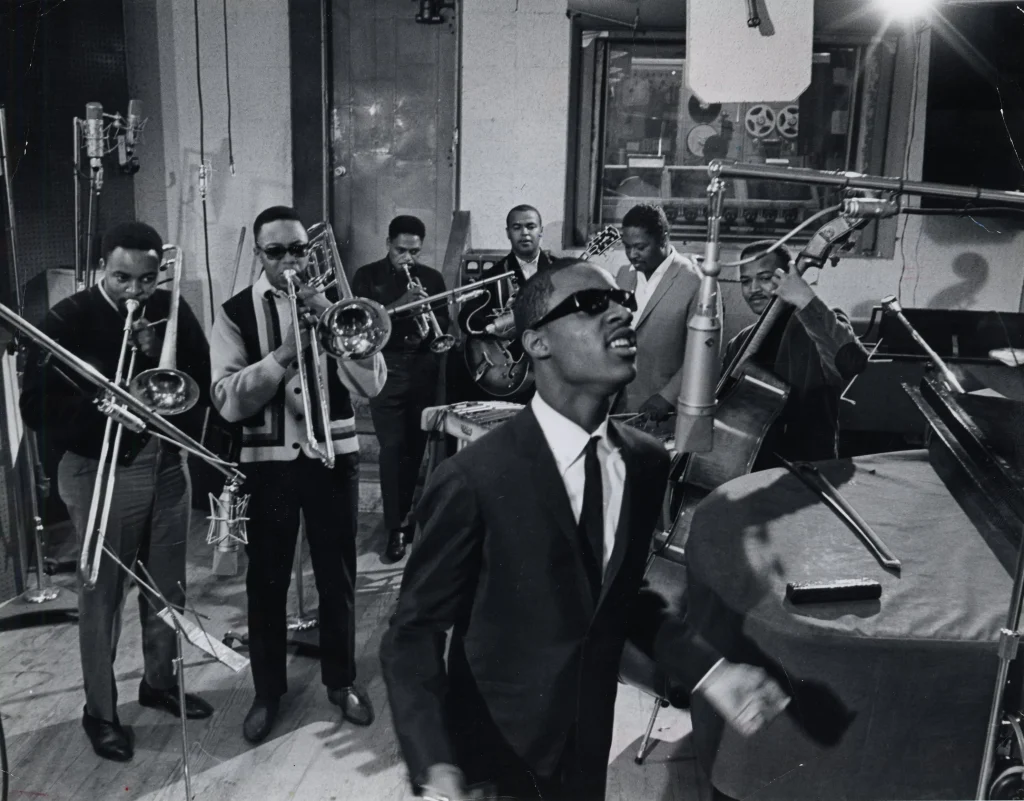
Meanwhile in Detroit, the Funk Brothers were crafting the soundtrack of a generation. Motown’s legendary rhythm section featured:
- Benny Benjamin’s pioneering backbeat, which defined the “Motown Sound”
- Richard “Pistol” Allen’s precise ghost notes and syncopated patterns
- Uriel Jones’s dynamic approach to ballads and uptempo numbers
The Funk Era (1965-1980): Rhythmic Innovations and Pioneers

The late 1960s marked the birth of funk, a genre that dramatically altered the landscape of rhythmic techniques in music. This era was characterized by a number of influential drummers who brought unique styles and innovations:
- Clyde Stubblefield (James Brown): Known as the “Funky Drummer,” Stubblefield’s work with James Brown led to the creation of the most sampled drum break in history. This break, characterized by its compelling groove and intricate snare work, continues to be a foundational element in hip-hop and sampled music.
- Bernard Purdie: Famous for the “Purdie Shuffle,” his technique combined a half-time shuffle with complex ghost notes, adding a smooth, swinging feel that has influenced drummers across various genres.
- Zigaboo Modeliste (The Meters): Modeliste’s rhythms, deeply rooted in New Orleans funk, are celebrated for their laid-back yet deeply groovy feel. His playing is a testament to the power of simplicity and feel over technical complexity.
- David Garibaldi (Tower of Power): Known for his precise and innovative linear patterns, Garibaldi’s approach to funk drumming emphasized the interplay between different drum kit components, creating a cohesive rhythmic pattern that operates within the framework of the groove.
Key Concepts in Funk Drumming
Reggae and Caribbean Influences (1960s-Present): A Rhythmic Awakening
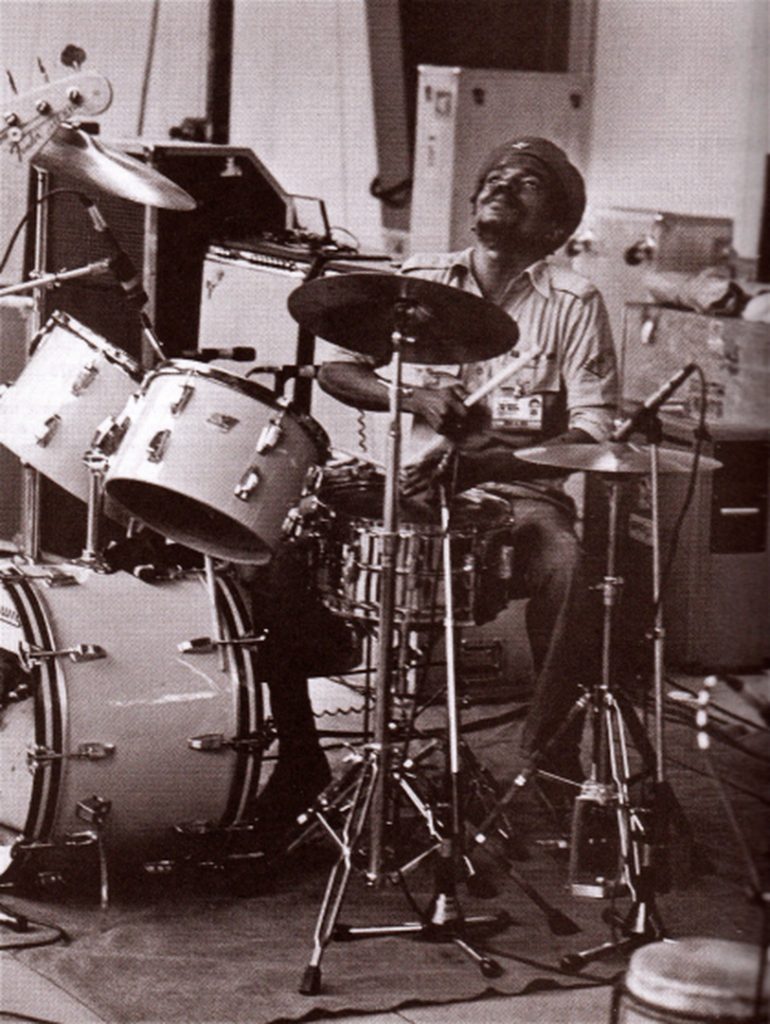
- Carlton Barrett (Bob Marley and the Wailers): Barrett’s innovative one-drop patterns and his ability to incorporate subtle syncopations and ghost notes have made him a foundational figure in reggae drumming.
- Sly Dunbar: Known for integrating electronic drum elements with traditional reggae beats, Dunbar’s style is marked by creativity and innovation, contributing to the development of the rockers beat and reggae fusion styles.
- Creation of Dub Effects and Rhythmic Space: Dunbar and others were instrumental in the creation of dub music, which emphasizes drum and bass lines stripped of much of the original song’s melody, showcasing the rhythmic patterns as central to the track.
The Evolution of Rock Drumming: Technical and Stylistic Revolutions 1965-1975)

Rock drumming has been an influential force in shaping the sound and intensity of rock music from its inception in the mid-20th century. This period was marked by significant technical innovations and stylistic evolutions that set the stage for the diverse range of rock subgenres that would emerge.
Technical Innovation in Rock Drumming
Stylistic Evolution of Rock Drumming
Rock drumming is marked by a strong emphasis on the backbeat, played on the snare drum on beats two and four, forming the core of rock rhythm. Influenced by various cultural rhythms, rock drummers added tribal and primal elements, enhancing the music’s raw energy. The physicality of rock drumming evolved, with drummers using forceful strikes to match the intensity of electric guitars and bass. Iconic drum fills and unique rhythmic patterns from this era became signature elements that are widely recognized and emulated by future drummers.
Key Innovators
Several drummers stand out for their contributions to the development of rock drumming during this transformative era:
- John Bonham (Led Zeppelin): Known for his powerful style, intricate bass drumming, and aggressive grooves.
- Keith Moon (The Who): Famous for his wild and explosive drumming style that perfectly complemented The Who’s dynamic performances.
- Ginger Baker (Cream): His work in Cream showcased his innovative use of double bass drums and his fusion of jazz techniques with rock rhythms.
- Mitch Mitchell (The Jimi Hendrix Experience): Blended rock power with jazz complexity, offering highly improvisational performances that complemented Hendrix’s guitar playing.
Global Influences and Modern Fusion (1970-Present)
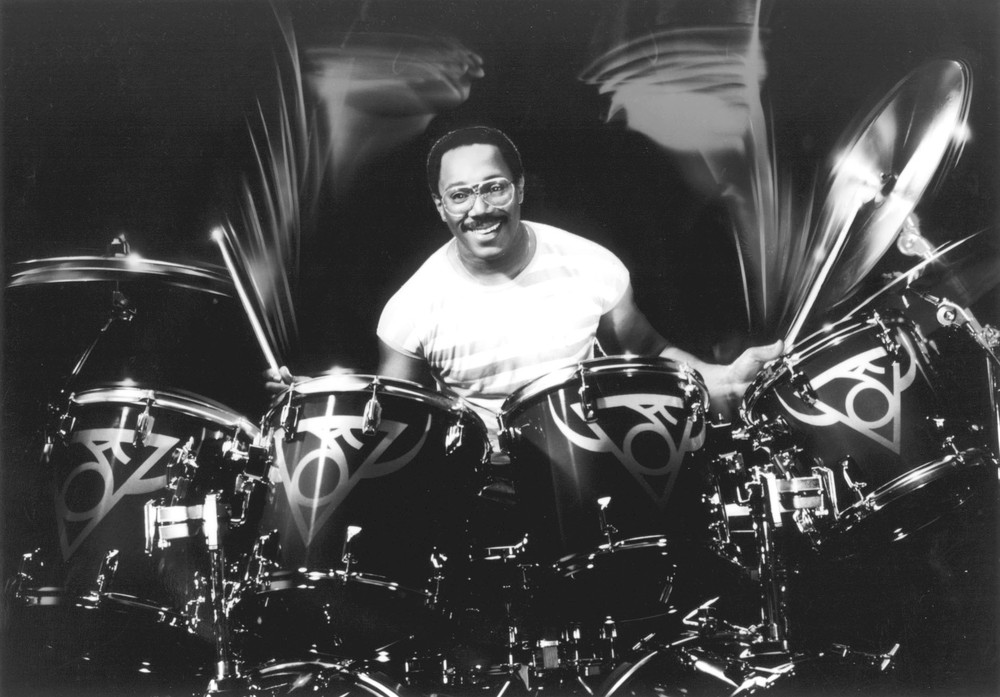
The fusion era, starting in the 1970s, melded jazz with elements of rock, funk, and R&B, creating a genre that demanded highly versatile drumming skills. Pioneers like Billy Cobham and Lenny White used advances in electronic drums and recording technology to expand the textures and dynamics of jazz drumming, setting the stage for the next generations.
Throughout the 1980s and beyond, the fusion genre was further enriched by drummers like Gary Husband, Vinnie Colaiuta, Steve Smith, Dave Weckl, and later, Dennis Chambers. These artists brought technical proficiency and complex rhythmic structures to the forefront, each adding their unique flair to fusion and modern jazz drumming.
In more recent years, drummers such as Nate Smith and Mark Guiliana have pushed the boundaries of the genre. Smith’s groove-oriented approach weaves together elements of jazz, funk, and soul, while Guiliana explores a blend of electronic beats and experimental textures, showcasing the continuous evolution of jazz drumming.
Today, fusion and modern jazz drumming continue to thrive as a hotbed for rhythmic innovation, drawing on a rich tapestry of global influences—from Indian tabla and African polyrhythms to Brazilian samba. This rich diversity ensures that fusion remains a dynamic and evolving genre, constantly inspiring new generations of drummers around the world.
Latin Jazz Evolution (1970-Present)

Latin jazz has woven a rich tapestry of rhythmic complexity and cultural fusion, significantly evolving through the contributions of master drummers and percussionists. This genre melds the vibrant energies of Afro-Cuban and Brazilian music with the sophisticated harmonies of jazz, creating a dynamic platform for rhythmic innovation.
Horacio “El Negro” Hernández has been pivotal in infusing traditional Cuban rhythms with the techniques of modern jazz drumming. His work brings the intricate polyrhythms of Afro-Cuban music into the jazz mainstream, influencing an entire generation of musicians.
Alongside Hernández, Giovanni Hidalgo has made substantial contributions with his virtuosic conga playing, blending Puerto Rican rhythms with broader Latin jazz elements to expand the genre’s global appeal.
Antonio Sanchez, renowned for his groundbreaking score for the film Birdman, has pushed the boundaries of Latin jazz with his complex, narrative-driven approach to drumming. His work exemplifies how modern jazz can incorporate cinematic and non-traditional elements while still respecting its roots.
Dafnis Prieto, another revolutionary figure, combines his Cuban heritage with a bold, innovative style. His technical prowess and compositional skill have earned him a Grammy Award, highlighting his role in advancing Latin jazz.
These artists, among others, have played critical roles in shaping Latin jazz into a genre that is as rhythmically rich as it is culturally significant, constantly evolving and captivating audiences worldwide with its pulsating energies and complex rhythms.
Technical Evolution
Contemporary Styles
Modern drumming encompasses numerous specialized approaches:
- Progressive rock’s complex time signatures and arrangements
- Hip-hop’s programmed beats and live sampling
- Electronic music’s integration of acoustic and digital elements
- World music fusion incorporating multiple cultural traditions
Studio Legends and Session Innovation
Session drummers from Nashville and Los Angeles have crucially shaped modern music production. They introduced new techniques and set lasting standards.
The Nashville Sound
In Nashville, drummers like Kenny Buttrey pioneered techniques that now define modern country music and influence various genres. Their contributions include:
- Country Shuffle Variations: They refined the shuffle rhythm, giving it a unique country flavor that fits both traditional and contemporary country music.
- Integration of Brush Techniques with Modern Patterns: They used brush techniques from jazz and blues to add a softer, more nuanced texture, enhancing the dynamics and expression in studio recordings.
- Development of Cross-Genre Versatility: These drummers excel in adapting to multiple musical styles, proving invaluable in genre-fusing sessions like country rock or pop-country.
- Creation of Signature Country Drum Sounds: They developed distinctive sounds, like the tight, muted snare and resonant kick drum, which are now staples in country music production.
Los Angeles Sessions

In Los Angeles, Jeff Porcaro’s work significantly influenced the drumming scene in pop, rock, and R&B:
- Development of the “Rosanna Shuffle”: Porcaro’s iconic shuffle for Toto’s “Rosanna” combines Bernard Purdie’s shuffle with John Bonham’s rock style, inspiring many drummers.
- Integration of Pop, Rock, and R&B Styles: His seamless blending of these genres crafted iconic sounds of the 70s and 80s.
- Innovation in Click Track Recording: Porcaro pioneered the use of click tracks, improving synchrony and precision in recordings.
- Creation of Complex Half-Time Feels: His approach to half-time feels brought dramatic tension and release to songs, crucial for modern pop and rock structures.
The Precision of Steve Gadd
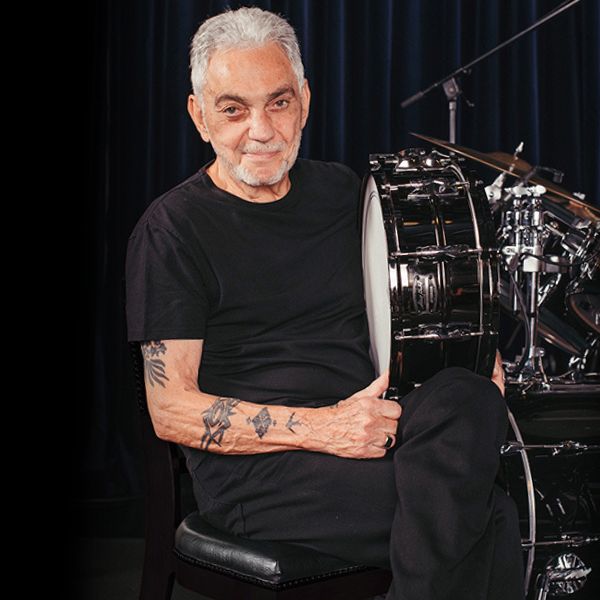
Steve Gadd, another session legend, reshaped the role of the studio drummer in the 1970s. His work with Paul Simon, Steely Dan, and Chick Corea demonstrated his unmatched versatility and creativity.
- Innovative Grooves: Gadd is celebrated for his groundbreaking drum patterns, like the linear groove in Paul Simon’s “50 Ways to Leave Your Lover.”
- Fusion of Styles: He seamlessly blended jazz, rock, and Latin influences, as heard in Chick Corea’s The Leprechaun.
- Rudiment-Based Creativity: Gadd popularized rudimental drumming, adapting military-style sticking patterns into contemporary music.
- Studio Consistency: His precise timing and ability to adapt to any musical style made him a favorite among producers and artists alike.
Impact of Technology
Recording and Production
Education and Access
Technology has democratized drum education through:
- Online learning platforms
- Video tutorials and streaming content
- Digital practice tools and metronomes
- Social media sharing and community building
Drumming in the Modern Era (1980s-Present)

Hip-Hop and Electronic Influences
The emergence of hip-hop in the 1980s brought a new approach to rhythm. Early producers sampled iconic drum breaks, like Clyde Stubblefield’s “Funky Drummer,” redefining how drums shaped a track. Live drummers, like Questlove of The Roots, began blending traditional drumming with programmed beats, creating a seamless fusion of acoustic and electronic sounds.
Electronic music also introduced drum machines, such as the Roland TR-808, which became a cornerstone of genres like house, techno, and trap. Today, drummers often integrate these elements into their performances using sample pads and triggers.
Metal and Extreme Techniques
The metal genre saw the rise of extreme drumming techniques, such as blast beats and rapid double bass pedal work. Drummers like Dave Lombardo (Slayer) and Tomas Haake (Meshuggah) pushed the limits of speed and precision. Modern metalcore and progressive metal have continued this evolution, incorporating odd time signatures and polyrhythms.
Post-Rock, Grunge, and Minimalism
Post-rock drummers, like George Daniel (The 1975) and Christopher Hrasky (Explosions in the Sky), emphasize texture and atmosphere over intricate fills. Their styles prioritize restraint and creativity, often using mallets, brushes, and electronic effects to create unique soundscapes. These drummers focus on supporting the music’s emotional depth rather than dominating it.
Grunge drummers of the 1990s, such as Matt Cameron (Soundgarden, Pearl Jam) and Chris Kinney (Mudhoney), brought a raw, dynamic energy that helped define the genre. They balanced powerful grooves with nuanced, atmospheric playing, bridging the gap between traditional rock aggression and post-rock subtlety. Their ability to transition seamlessly between explosive fills and quieter, mood-driven sections made grunge drumming both innovative and emotionally impactful.
Danny Carey (Tool) expanded on these ideas with his progressive, polyrhythmic approach. His drumming blends atmospheric textures with complex time signatures, drawing on influences from post-rock, grunge, and even world music. Tracks like “Schism” and “Lateralus” showcase his mastery of blending intricate rhythms with emotive dynamics. Carey’s use of electronic elements, custom drum kits, and tribal-inspired patterns pushed the boundaries of what rock drumming could achieve.
This fusion of post-rock minimalism and grunge’s raw power laid the groundwork for modern rock drummers, inspiring a generation of musicians to experiment with texture, dynamics, and emotional expression.
Hybrid Drumming and Technology
The integration of acoustic and electronic drumming has become a defining feature of the modern era. Drummers now use sample pads, triggers, and loop stations to expand their sound. Artists like Dominic Howard (Muse) and Darren King (ex-Mutemath) are known for blending traditional kits with cutting-edge technology.
Cultural Significance and Future Directions
Social Impact
Drumming continues to influence society in various ways, from community drum circles and therapeutic applications to fostering cross-cultural exchange and understanding. It plays a significant role in educational programs and youth development, and helps in the preservation of traditional rhythmic heritage, enriching communities globally.
Future Trends
Emerging developments include:
- Integration of artificial intelligence in rhythm creation
- Advanced electronic drum technology
- Cross-genre fusion and experimentation
- Preservation and revival of traditional techniques
This evolution of drumming styles reflects both musical development and wider societal changes. It highlights significant technological advancements and extensive cultural exchanges. Each era has added unique elements to modern drumming, creating a diverse and evolving art form.
Join Our Beyond the Beat Newsletter
All the latest drums news, interviews, lessons, reviews, deals and more, direct to your inbox!



